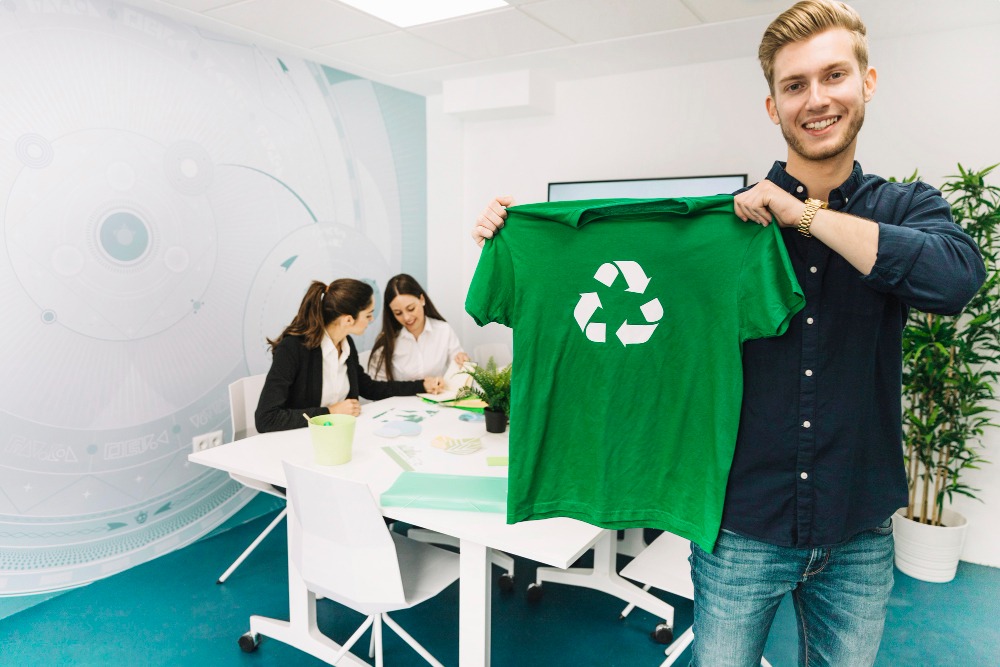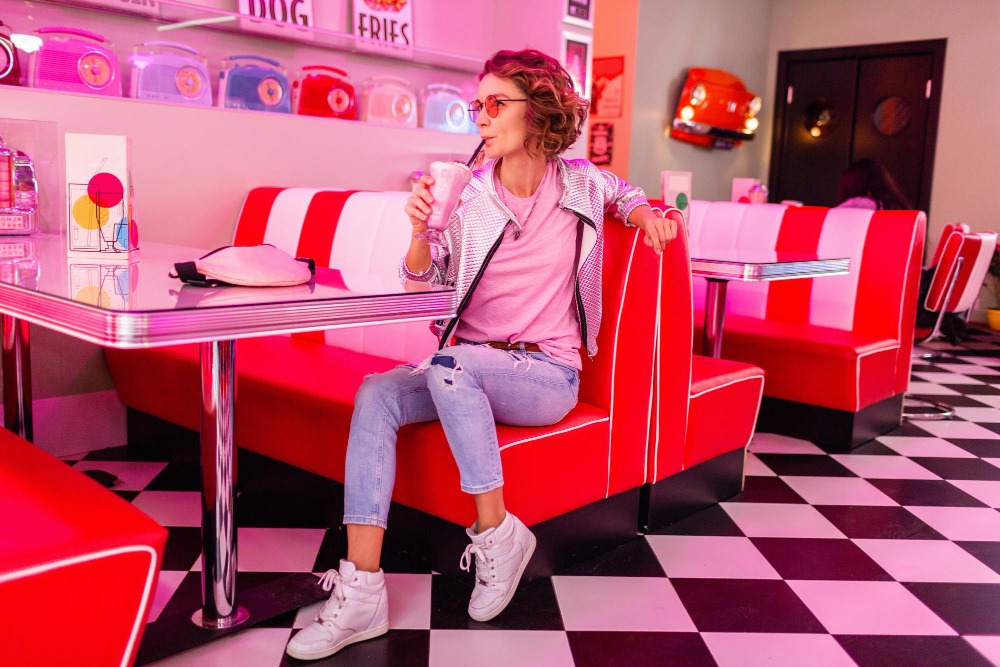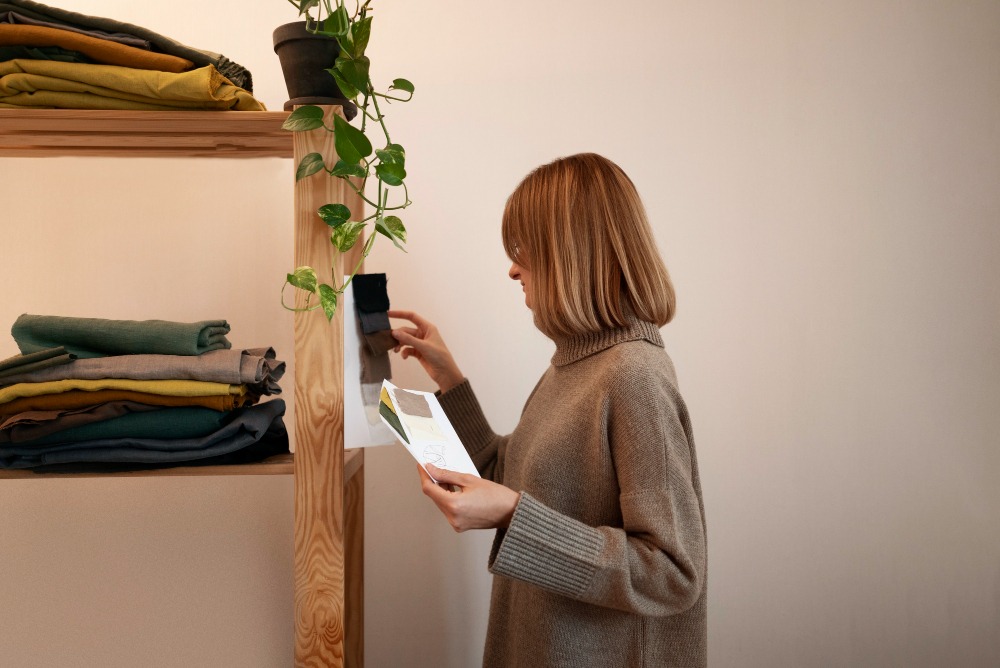Feeling a fashion rut? Does your closet overflow with clothes you no longer wear? Before heading to the store and contributing to fast fashion’s environmental woes, consider the power of upcycling! This blog delves into the world of upcycling clothes and empowers you to transform your wardrobe in just one week.
Fast Fashion’s Fading Thread: The Need for a Wardrobe Reset
Fast fashion’s lure of trendy clothes at low prices comes at a significant environmental cost. Upcycling offers a compelling alternative, allowing you to embrace sustainable practices and express your unique style.
- The Environmental Impact of Fashion: The fashion industry is a major polluter, contributing to greenhouse gas emissions, water usage, and textile waste. Upcycling diverts unwanted clothes from landfills and reduces the demand for virgin materials.
- The Power of Personal Style: Upcycled clothes are inherently unique, allowing you to stand out from the crowd and express your individuality.
Planning Your Wardrobe Revolution: A Week-Long Upcycling Journey
Ready to breathe new life into your wardrobe with upcycling? Let’s break down the process into manageable steps:
- Day 1: The Great Closet Cleanout (Decluttering and Inspiration)
- Declutter with a Purpose: Sort through your clothes, ruthlessly discarding unworn items and categorizing the rest based on upcycling potential.
- Hunt for Upcycling Inspiration: Browse online resources like Pinterest, YouTube tutorials, or upcycling blogs to discover creative ideas for each clothing category.
- Day 2: Gathering Supplies and Tools:
- Essential Upcycling Tools: Stock up on basic sewing supplies like needles, thread, scissors, fabric glue, and a seam ripper (optional).
- Embellishment Bonanza: Consider adding buttons, zippers, patches, or fabric paint for a personalized touch. Explore thrift stores or craft stores for unique embellishments.
- Day 3: Upcycling Basics: Simple Techniques for Big Results
- T-Shirt Transformation: Turn old tees into trendy crop tops, tank tops, or even tote bags.
- Denim Revamp: Shorten long jeans, add patches, or create a denim skirt from old jeans.
- Sweater Makeover: Freshen up old sweaters by adding embroidery, embellishments, or even turning them into cozy scarves.
- Day 4 & 5: Intermediate Upcycling Projects for the Adventurous
- Dyeing and Distressing: Give old clothes a whole new look with fabric dyes or bleaching techniques (be sure to research colorfastness of fabrics before dyeing).
- Creative Patchwork: Combine leftover fabric scraps or pieces from different garments to create unique and colorful clothing pieces.
- Deconstruction and Reconstruction: For the truly adventurous, try deconstructing old clothes and using the fabric pieces to create entirely new garments.
- Day 6: Accessorize and Style Your Upcycled Creations
- The Power of Accessories: Elevate your upcycled creations with statement jewelry, scarves, belts, and shoes. Mix and match to create unique outfits.
- Second-Hand Shopping Synergy: Pair your upcycled pieces with pre-loved finds from thrift stores to curate a truly sustainable and personalized wardrobe.
- Day 7: Show Off Your Sustainable Style!
- Strut Your Stuff: Flaunt your upcycled creations with confidence! Share your transformation story and inspire others to embrace sustainable fashion.
- Document Your Journey: Capture your upcycled outfits with photos and share them on social media using hashtags like #upcycledfashion and #sustainablewardrobe.
Beyond the Basics: A World of Upcycling Inspiration
Upcycling goes beyond simple techniques. Here are some additional resources to spark your creativity:
- Upcycling for Different Clothing Categories: Explore specific techniques for upcycling dresses, shirts, pants, and more.
- Advanced Upcycling Techniques: Learn about embroidery, applique, and other methods to add intricate details to your upcycled pieces.
- Upcycling for Beginners: Find resources tailored for those new to upcycling, with clear instructions and step-by-step guides.
- Upcycling Challenges and Community Engagement:Join online communities dedicated to upcycling and participate in challenges to push your creative boundaries.
Upcycled Fashion for Every Style:
Upcycling allows you to create unique pieces that reflect your personal style. Here are some ideas to inspire you:
- Bohemian Chic:Turn flowy maxi dresses into skirts, add lace or fringe to shirts, and create unique headbands from leftover fabric scraps.
- Sporty Chic:Repurpose old sweatpants into comfy joggers, add reflective details to running jackets, or create gym bags from old backpacks.
- Vintage Vibes:Embrace vintage aesthetics by upcycling old button-down shirts, adding embroidery or lace details to dresses, and creating a denim skirt with a high waist.
- Modern Minimalist:Focus on clean lines and simple cuts. Upcycle oversized sweaters into minimalist tunics, dye t-shirts in solid colors, and create tote bags with clean geometric patterns.
Upcycling Beyond Clothes: Think Outside the Garment
Upcycling isn’t limited to clothing! Here are some additional ways to give new life to unwanted items:
- Fabric Scraps to Home Decor:Transform fabric scraps into throw pillows, table runners, coasters, or wall art.
- Denim Delight:Repurpose old jeans into coasters, placemats, or even a stylish magazine holder.
- T-Shirt Twists:Turn old t-shirts into reusable cleaning cloths, grocery bags, or even a pet bed.
FAQS
- Is a one-week turnaround for an upcycled wardrobe overhaul realistic?
Absolutely! With dedication and a little planning, you can create several unique pieces in a week. The timeframe depends on the complexity of your projects and your existing sewing skills.
- What are the first steps to upcycling my wardrobe in a week?
- Declutter and Assess: Start by decluttering your closet. Identify clothes you no longer wear and separate items with potential for upcycling. Consider the fabric type, condition, and colors when making selections.
- Gather Inspiration: Browse online tutorials, magazines, or social media for upcycling ideas. Pinterest is a great resource for visual inspiration.
- Plan Your Projects: Choose 2-3 upcycling projects that suit your skill level and the time you have available. Prioritize what you’ll wear most.
- What are some simple upcycling projects I can do in a week?
- Transform T-shirts: Cut a plain T-shirt into a crop top, tie-dye it for a new look, or add embellishments like embroidery or patches.
- Revamp Jeans: Distress existing jeans, add patches or appliques, or try a trendy raw hem.
- Give Dresses New Life: Shorten a long dress, add sleeves to a sleeveless one, or cinch the waist for a different silhouette.
- Repurpose Scarves and Fabrics: Scarves can be transformed into skirts, headbands, or even bag straps. Use leftover fabric scraps to create hair accessories, pockets for jeans, or decorative details on other garments.
- I’m a complete beginner. Are there any upcycling projects I can do?
Definitely! Here are some beginner-friendly options:
- No-Sew Transformations: Tie an old t-shirt into a cute knotted top or transform a scarf into a skirt by simply tying it around your waist.
- Fraying and Distressing: Carefully fray the hems of jeans or t-shirts for a relaxed look. This can be done without any sewing required.
- Iron-on Patches and Embellishments: Iron-on patches or appliques can add personality and hide minor imperfections on clothes.
- Where can I find materials for upcycling?
- Your Own Closet: The best place to start is your own wardrobe! Look for clothes you don’t wear anymore that can be given a new lease on life.
- Thrift Stores and Vintage Shops: These treasure troves offer a wide variety of pre-loved garments at affordable prices, perfect for upcycling projects.
- Friends and Family: Ask around to see if anyone has unwanted clothes you can use for upcycling.
- Leftover Fabric Scraps: Don’t throw away leftover fabric scraps from previous sewing projects. They can be used for small upcycling details or embellishments.
- What basic tools will I need for upcycling?
- Scissors: Sharp fabric scissors are essential for cutting and trimming fabric.
- Sewing Kit: A needle, thread, and safety pins will come in handy for basic sewing repairs, attaching embellishments, or making simple alterations.
- Iron: An iron can help with hemming, creating creases, and applying iron-on patches.
- Fabric Markers (Optional): Fabric markers can be used to personalize your upcycled pieces with drawings or lettering.
- One week seems too short. Can I extend the project timeline?
Absolutely! Take your time and create a sustainable wardrobe at your own pace. Upcycling is a journey, and you can always add new pieces to your upcycled collection over time.
- Upcycling sounds fun! Where can I find more inspiration and tutorials?
There’s a wealth of information available online! Here are some resources to get you started:
- Upcycling Websites and Blogs: Several websites and blogs focus specifically on upcycled fashion, offering project ideas and tutorials.
- YouTube Channels: Many YouTubers create video tutorials on upcycling clothes, with step-by-step instructions for various projects.
- Social Media: Look for hashtags related to upcycling fashion on platforms like Instagram or Pinterest for inspiration and ideas.
- Revamping my wardrobe with upcycled clothes sounds like a great way to be more sustainable. Are there any other benefits?
Upcycling offers numerous advantages:
- Cost-Effective: Upcycling allows you to create new clothes without spending a fortune on retail items. You’ll be giving new life to existing materials, saving money compared to buying new clothes.
- Reduced Environmental Impact: Upcycling helps reduce textile waste and the environmental impact associated with fast fashion production.
- Express Yourself Uniquely: Upcycled clothing allows you to create one-of-a-kind pieces that reflect your personal style. You won’t find the same outfit walking down the street!
- The Thrill of Creation: Upcycling can be a fun and rewarding experience. Transforming old clothes into something new and wearable brings a sense of accomplishment.
- Supports Sustainable Practices: By upcycling, you’re actively supporting a more sustainable approach to fashion and contributing to a circular economy.
Conclusion
Upcycling is more than a trend; it’s a movement towards a more sustainable future for fashion. By breathing new life into old clothes, you’re reducing your environmental footprint and expressing your individuality. So, grab those old clothes, unleash your creativity, and embark on your upcycled fashion adventure. Remember, one upcycled garment at a time, we can rewrite the narrative of fashion and create a more sustainable wardrobe revolution.





















